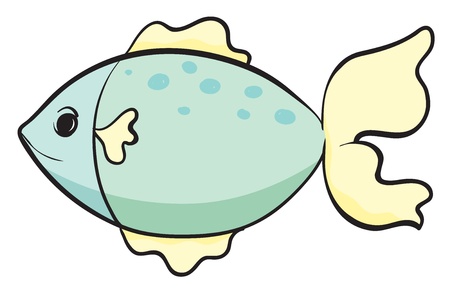Introduction: Why Weather Matters When Choosing Your Tactics
When it comes to coarse fishing in the UK, there’s no denying that our famously unpredictable weather and ever-changing water conditions can make or break a session. Whether you’re planning to fish with a feeder or a float, understanding how these environmental factors play into your tactics is absolutely vital. British anglers know all too well that a sudden downpour, a biting easterly wind, or even just a slight drop in temperature can dramatically change fish behaviour and feeding patterns. Because of this, making the right choice between feeder and float isn’t just about personal preference—it’s about adapting to what nature throws at you on any given day. In this article, we’ll explore why paying attention to the forecast and reading the water is key to success, and how these elements should influence your approach whenever you’re out on the bank.
Typical British Weather and Its Influence on Fishing
If you’ve spent any time fishing in the UK, you’ll know that the weather here can be a real mixed bag. One minute you’re basking in warm sunshine, the next you’re reaching for your waterproofs as the heavens open. It’s all part of the charm of British angling! Understanding these ever-changing conditions is key to making the most out of both feeder and float fishing techniques.
From drizzly mornings to blustery afternoons, the UK’s climate is famously unpredictable. We often joke that you can experience all four seasons in a single day—and there’s some truth to it! These shifts aren’t just small talk; they have a real impact on where fish hold up and how they feed, which means anglers need to stay flexible and observant every time we head out.
Let’s take a quick look at some common weather patterns and how they typically affect our fishing sessions:
| Weather Pattern | Typical Impact on Fishing |
|---|---|
| Overcast & Mild | Often great for float fishing; fish are more confident to roam away from cover. |
| Bright & Sunny | Fish may seek deeper or shaded areas; feeder fishing can be more effective. |
| Windy Conditions | Makes float control tricky; feeder rigs help keep bait stable in choppy waters. |
| Heavy Rain | Muddies up margins, sometimes pushing fish into open water—feeder tactics shine here. |
| Frosty Mornings | Fish become sluggish; delicate float tactics with smaller baits can pay off. |
In short, adapting your approach to match what the British skies throw at us is half the fun (and challenge) of angling on these shores. Whether you prefer casting a feeder out into the wild blue yonder or presenting a float tight to the margins, keeping an eye on the forecast and learning how fish respond will always give you an edge.

3. Float Fishing: When Calm Waters and Mild Weather Shine
There’s nothing quite like float fishing on a classic British stillwater or a gently flowing canal during those calm, settled days. When the wind drops and the water takes on that mirror-like quality, float fishing really comes into its own. These are the times when you can finely tune your presentation, watching every little dip and twitch of your float with anticipation. During periods of mild weather—think overcast but warm, with little breeze—fish tend to patrol the upper layers or margins, making them prime targets for well-presented baits under a float. In these conditions, you can expect bites to be more confident and visible, especially from roach, rudd, and tench. But it’s not just about temperature; air pressure plays a sneaky role too. A steady or slowly rising barometer often means fish are active near the surface or mid-water, whereas falling pressure might push them down or make them a bit finicky. As any local angler will tell you, those flat-calm mornings after a high-pressure night can be magic for float tactics—just mind your shotting pattern and keep your bait going in little and often! All in all, if you’re faced with gentle winds and settled weather here in Blighty, reaching for the float rod is often your best shout for an enjoyable and productive session.
4. Feeder Fishing: Making the Most of Wind, Rain, and Coloured Water
If you’ve ever sat bankside on a classic British morning—drizzle in the air, gusty winds sweeping across the lake, and water as coloured as a builder’s brew—you’ll know feeder fishing can be your best mate in these conditions. Unlike float tactics that often struggle when things get choppy or murky, feeder fishing thrives when the weather’s turning a bit “proper.” Here’s a practical guide to making the most of wind, rain, and coloured water with your feeder setup.
Why Feeder Fishing Shines When It’s Not All Sunshine
The beauty of feeder fishing is its versatility. When the wind’s up and surface ripples make float control nigh on impossible, a well-placed feeder will hold bottom and deliver bait right where you want it. Rain tends to stir up fish activity too, especially on stillwaters, drawing fish closer to the bottom where your feeder is waiting.
Adapting to Wind and Waves
Wind direction and strength play a huge role in British fishing. On blustery days, use heavier feeders (40g or more) to maintain accuracy and ensure your rig stays put. Position yourself with the wind behind you if possible for longer casts and better line lay.
| Condition | Feeder Choice | Tactic Tip |
|---|---|---|
| Light Breeze | 20–30g open end feeder | Focus on accurate casting close to features |
| Strong Wind | 40–60g cage or window feeder | Cast with the wind; keep rod tip low to water |
Rainy Days: Baiting Up Right
A bit of British drizzle or even steady rain is no excuse for packing up. In fact, rain oxygenates the water and gets fish rooting around for grub. Increase the feed content slightly in your mix—think chopped worms and sweetcorn for extra attraction—and recast regularly to build a bed of bait.
Coloured Water: Turning Murk into Opportunity
Muddy or coloured waters are common after heavy rainfall or windy spells. While float fishing can become guesswork in these conditions, feeder fishing comes into its own. Use high-visibility baits like fluoro pinkies or bright corn tips on your hook, and don’t be shy about using groundbait mixes with strong scents (think fishmeal or spicy blends).
| Water Clarity | Bait Colour/Type | Additive Suggestion |
|---|---|---|
| Clear | Natural maggot/worms | No need for extra scent |
| Slightly Coloured | Darker pellets, red worm pieces | Add mild fishmeal groundbait |
| Muddy/Very Coloured | Bright corn/pinkie/fluoro boilies | Add strong spice/fishmeal attractants |
So next time you’re faced with proper British weather—wind howling, rain falling sideways, and water as brown as your Sunday gravy—don’t pack away just yet. With a few tweaks to your approach, feeder fishing turns tough conditions into real opportunities for cracking sport.
5. Real-World Examples from the Bank
If there’s one thing every UK angler will tell you, it’s that no two days on the bank are ever quite the same—especially when it comes to feeder and float fishing. Let me share a couple of tales from my own sessions along local rivers and stillwaters, which show just how much adapting to the weather and water conditions can make or break your day.
Chilly Mornings on the River Trent: One early spring morning, I found myself shivering on the banks of the Trent with a gentle but biting wind pushing downstream. The water was up and coloured after recent rain. Float fishing just wasn’t cutting it—the flow was too strong, dragging my bait through the swim far too quickly for wary roach. Switching over to a cage feeder loaded with groundbait allowed me to present maggots tight to the bottom, where fish were hugging for shelter. A few tweaks, like shortening my hooklength and using a heavier feeder, turned a blank into a tidy net of dace and skimmers.
Sunny Days at a Stillwater Commercial: Contrast that with a calm summer afternoon at my local commercial fishery in Staffordshire. The sun was out, and you could spot carp cruising just beneath the surface. Here, float tactics shone—shallow rigs and light lines tempted plenty of bites as fish basked near the top in the warmth. Had I stuck rigidly to feeder tactics on the deck, I’d have missed out on the action happening in the upper layers.
Top Tip: Always watch what’s happening around you before setting up. Wind direction, cloud cover, and even subtle changes in temperature can give away where fish are feeding. Don’t be afraid to swap between feeder and float during your session—it can mean the difference between a red-letter day and going home empty-handed.
Local Knowledge Counts: Chatting with fellow anglers on the bank often gives invaluable hints. On several occasions at my favourite Yorkshire canal, old hands have tipped me off that bream switch from float to feeder territory as soon as rain colours up the water—knowledge that’s led to some cracking nets when everyone else struggled.
In short, being flexible and tuned in to both weather and water is key for success here in Blighty. Next time you head out, keep your eyes open, trust your instincts, and don’t be afraid to mix things up depending on what Mother Nature throws your way!
6. Tips for Switching Tactics and Adapting on the Day
When you’re out on the bank in the UK, one thing’s for sure: no two days ever fish quite the same, and being able to judge when to change between feeder and float fishing can make all the difference to your catch rate. Here are some handy pointers to help you read the conditions and adapt your approach as needed.
Keep an Eye on the Weather
If the wind picks up or there’s a sudden downpour, feeder fishing often comes into its own. Choppy water will disrupt float control, making it tricky to present your bait delicately. Conversely, if things calm down and there’s barely a ripple on the surface, that’s your cue to break out the float gear—especially if fish start topping or cruising just under the surface.
Watch Water Clarity and Flow
After heavy rain, many UK venues will colour up and flow faster. In these murky conditions, a feeder packed with smelly groundbait helps draw fish in and keeps your hookbait right where you want it. On clear days or slow-moving waters, though, wary fish might shy away from a big splashy feeder. That’s when a float fished further out or right under your feet can tempt those nervous bites.
Observe Fish Behaviour
Are you seeing signs of fish bubbling close in or cruising near the surface? These are classic float-fishing situations—try shallow rigs or even waggler tactics. But if bites dry up or fish seem to be hugging the bottom out of sight, switching back to a feeder can get your bait down where they’re feeding confidently.
Don’t Be Afraid to Experiment
The best anglers are those who aren’t afraid to chop and change. If you’re not getting bites after 20–30 minutes, don’t just sit it out; tweak your rig, try a different swim, or switch methods entirely. Carry both feeder and float gear so you can react quickly if conditions shift—it could be the difference between a blank day and a cracking net of fish.
Ultimately, local knowledge counts for a lot, but with these tips in mind, you’ll have the confidence to adapt on the fly, making every session on Britain’s waters more productive and rewarding.
7. Conclusion: Picking the Right Gear for British Conditions
In a nutshell, understanding how weather and water conditions affect feeder and float fishing in the UK is key to making your time on the bank truly rewarding. Whether you’re facing blustery winds on a reservoir or basking in rare sunshine by a quiet canal, there’s always an opportunity to adapt your tactics and enjoy the session. Remember, feeders can shine when rivers are running high or lakes are stirred up, while floats often come into their own on calm, clear days. Don’t be afraid to swap between methods—sometimes the British weather changes quicker than you can tie a hook! The real joy of angling here lies in embracing these ever-shifting elements, experimenting with your tackle, and learning from each unique day out. So pack both float and feeder set-ups, keep an eye on the skies (and maybe bring an extra flask of tea), and get stuck in. Every outing is a chance to become a bit more in tune with our great British waters—and that’s what makes fishing here so special.


